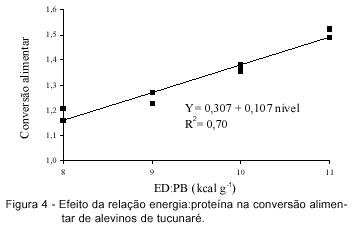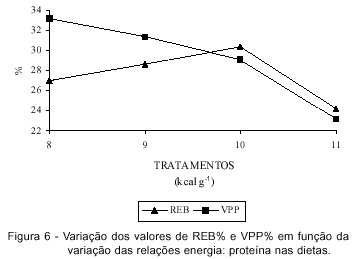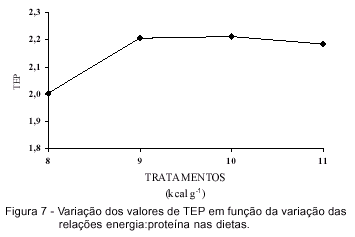To evaluate the effect of the energy to protein ratio on the performance and body composition of the peacock bass (Cichla sp.), 196 fingerlings of the species weaned to accept dry feed, with an average body weight of 10 g, were housed in 25 L cages, placed in 16, 500L cement boxes, under a water reuse system, inside a greenhouse. Fish were fed ad libitum with a dry diet, twice a day, for 65 days with four iso-caloric rations (3,500 kcal DE kg-1), with increasing levels of crude protein 30%, 33%, 37% and 41%, establishing DE:CP ratios of 8, 9, 10 and 11 kcal DE g-1 CP, in a completely randomized design with 4 treatments and 4 replications. Before starting the experiment, a group of fish was slaughtered and the carcass content of protein, fat, water and ash were determined. At the end of the experimental period, groups of fish from each treatment were slaughtered for comparative carcass composition analysis. The results were analysed by ANOVA using the SAS statistical package for general linear model analysis, at 5% probability level. Results allow to infer that nutritional requirements of peacock bass can be met by diets containing between 8 an 9 kcal DE g-1 CP, or 37 to 41% CP and 3,500 kcal DE kg-1 of diet.
Chichla sp.; efficiency ratio; protein; productive value; gross energy










